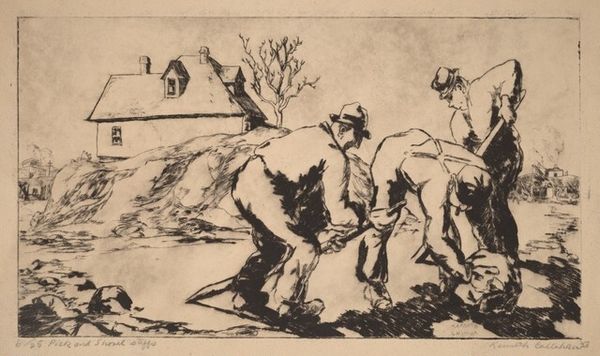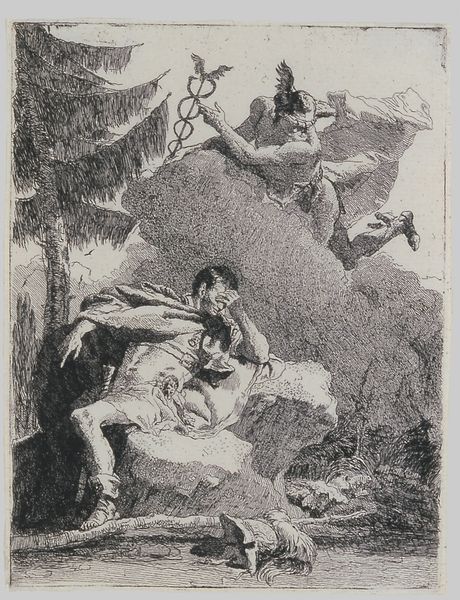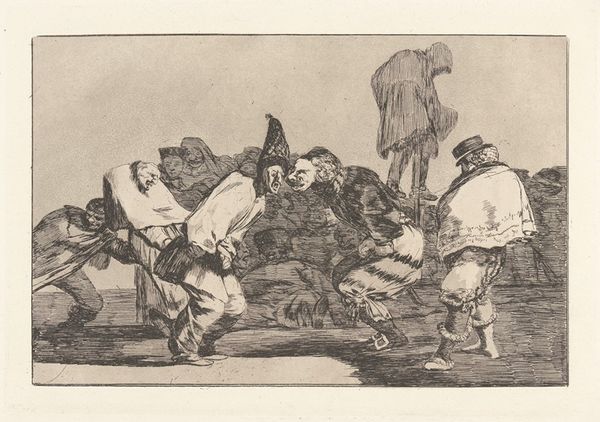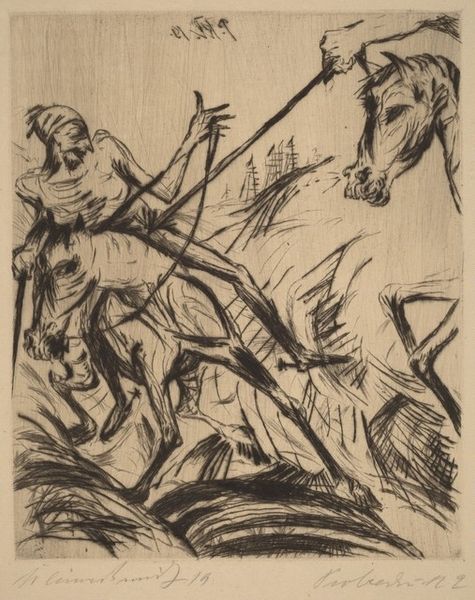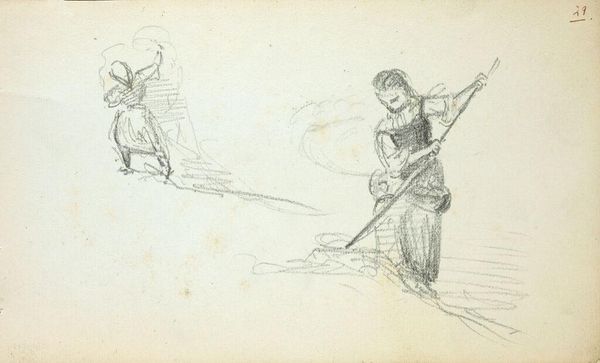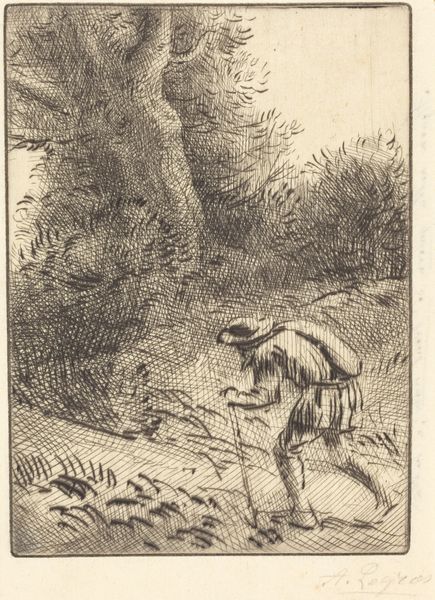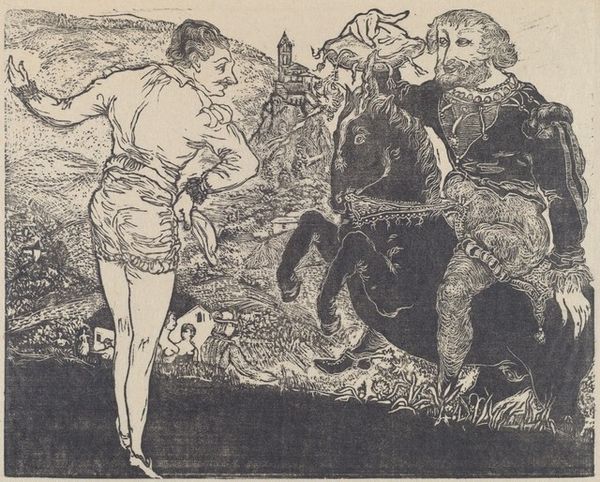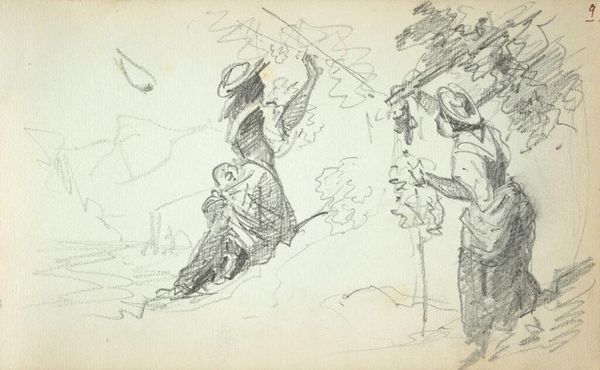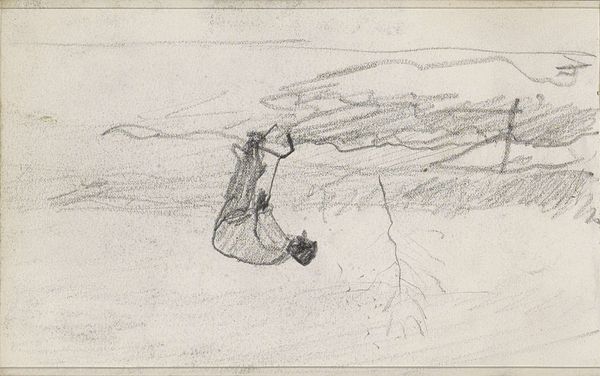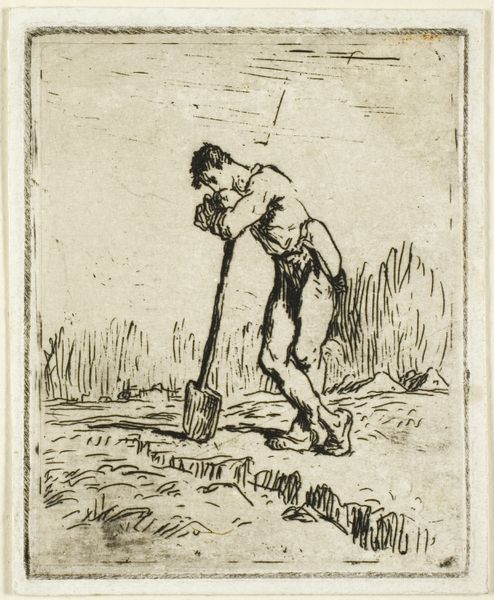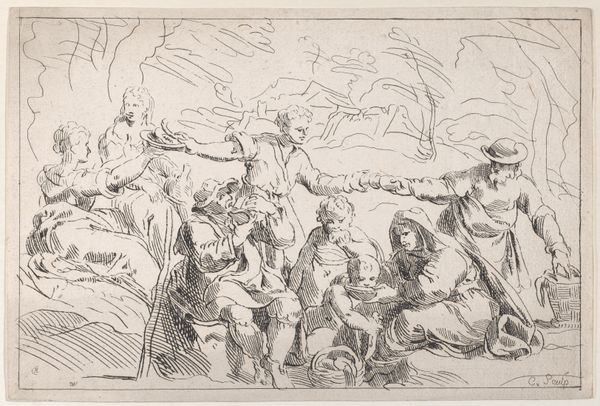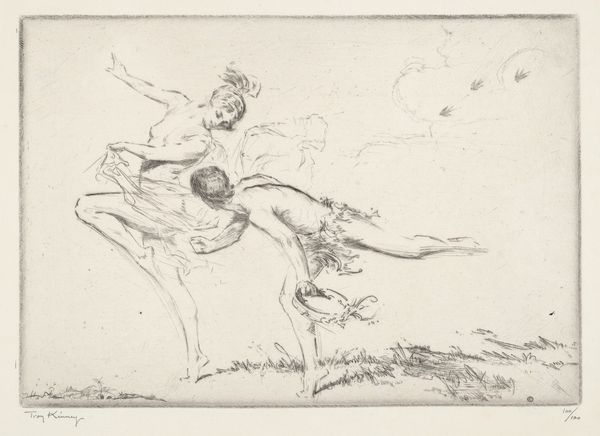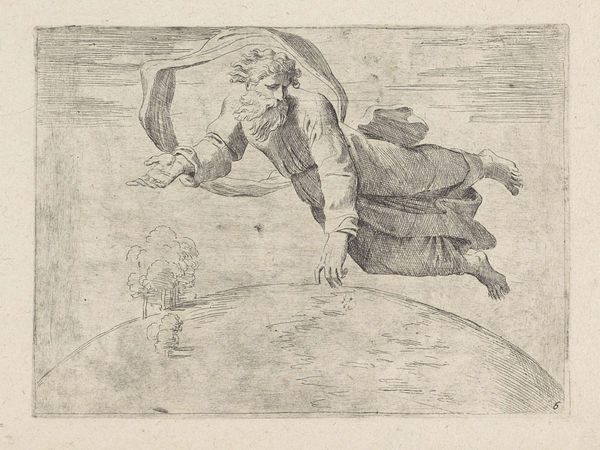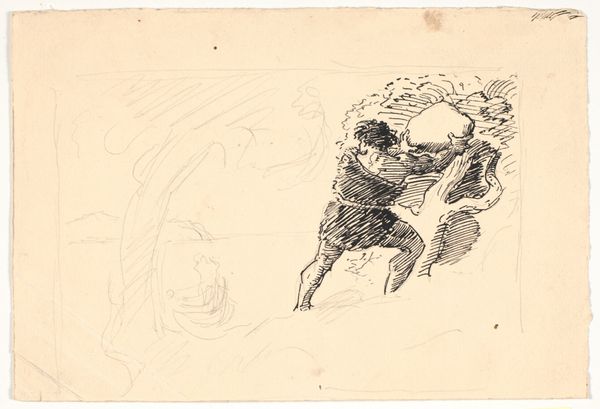
drawing, print, ink
#
portrait
#
drawing
#
ink drawing
#
narrative-art
#
pen drawing
# print
#
landscape
#
figuration
#
ink
#
genre-painting
Copyright: National Gallery of Art: CC0 1.0
Curator: This is "Fetch It," a 1920 ink drawing by Edmund Blampied. There's such delightful movement! A man joyfully throwing something on a beach to an eager, expectant dog. Editor: It feels like a stolen moment of pure playfulness rendered in these quick, confident lines. I'm curious about Blampied's choice of ink and printmaking—they are the most relevant components for creating this image, right? It emphasizes the relationship to illustration and how his works often bridged fine art with more accessible formats. Curator: Absolutely. His printmaking allowed for wider distribution, embedding these scenes of everyday life into many homes. Beyond the social aspect, it highlights the ephemeral nature of these shared moments – the throw, the leap, the anticipation – things inherently transient yet beautifully captured. Don't you feel there's an enduring joy shimmering out? Editor: The scene definitely exudes charm and that sense of shared activity between human and animal—especially visible with that contrast between the lively, textured fur of the dog and the smoother, quicker rendering of the man's form. What was his artistic community like, and what labor processes might Blampied employ to make his artworks widely available to ordinary people in his time? Curator: Blampied had the habit of imbuing ordinary tasks and familiar relationships with a quiet grandeur. Here, it's about a simple game of fetch on a day by the water’s edge. You look beyond that charming tableau, though, and you ask fundamental questions about its production and availability to others. I guess this is a conversation piece that is designed for endless conversations and a wide distribution. Editor: Exactly. I suppose what stays with me is the relationship between accessibility, materials, and labor. To ponder on how "Fetch It" embodies art reaching beyond its frame—and what possibilities arise when considering art from those standpoints.
Comments
No comments
Be the first to comment and join the conversation on the ultimate creative platform.
